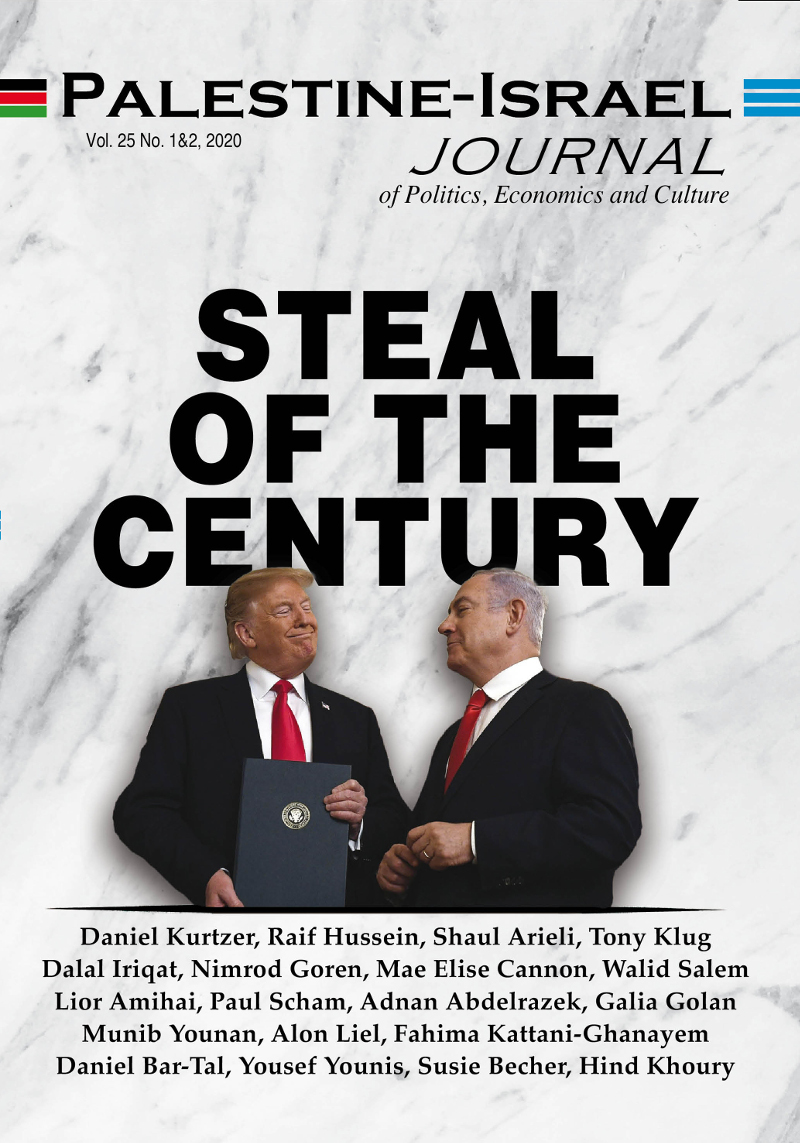Some two weeks after U.S. President Donald Trump’s peace plan was formally released, U.S. Ambassador to Israel David M.Friedman conducted a briefing and press conference at a right-wing research institute in Jerusalem. Toward the end of his remarks, during which he both explained and applauded Trump’s plan, Friedman stated:
There is the deal and then there is the deal within the deal. The deal itself, which is the long document that you’ve read … is the terms upon which Israel and the Palestinians will exist. Two separate states, side-by-side: A nation-state of the Jewish people and a nation-state of the Palestinian people … Now, we think it’s a basis for negotiation …
In terms of the deal within the deal, that is the agreement that we’ve reached with Israel that if Israel… creates a four-year settlement freeze with regard to the 50% of Area C that is allocated to the Palestinians … and agree to use this plan as a basis for negotiation … then upon Israel applying its laws to the territory that is earmarked for Israel within Judea and Samaria that is laid out in the map … then the U.S. will recognize Israel’s application of its laws … I don’t know if the right word is compensation, but as an inducement for Israel to keep the other territory open for future agreement.
A Practical Plan for Annexation
It is possible to be — and, in fact, one should be — opposed to Trump’s plan, but those who simply mock the document are missing the heart of the matter. As a proposal for negotiations between two parties, it is certainly not a serious plan, since there is no chance the Palestinians would agree to even the opening lines. The plan is so one-sided that Arab states that want to curry favor with Trump were compelled to condemn it. But beyond serving as a theoretical proposal for a peace plan, it is rather far more of a practical work plan for annexation of the settlements and the subsequent foiling of any possibility of a viable future Palestinian state.
This is indeed the “deal within the deal” that Friedman is referring to. Its ultimate goal is apparent to anyone who has been following the development of the “Deal of the Century,” yet its essence could not have been more precisely or cynically described than by Friedman’s own words.
The various unilateral moves carried out by the current U.S. Administration in close coordination with the Israeli government prior to publication of the “deal” — from transferring the U.S. embassy to Jerusalem, through cutting aid to the Palestinian Authority to U.S. recognition of Israeli sovereignty over the Golan Heights — underscore the notion that an acute and advanced understanding has been reached between the Israeli right wing and the Trump administration concerning sweeping unilateral and irreversible measures.
These moves were likewise reinforced by statements from Friedman and former U.S. Special Envoy Jason Greenblatt regarding Israel’s right to annex parts of the West Bank and by U.S. Secretary of State Mike Pompeo’s declaration on the legality of Israeli settlements.
A Joint Israeli-American Effort
At the heart of these measures was a joint Israeli-American effort to reorient the terms of the political debate and omit its key issues — sovereignty, borders, Jerusalem and refugees — from the broadly agreed binding principles of a two-state framework and international law, while moving from a creeping annexation paradigm to a sweeping formal annexation with U.S. approval.
Hence, the proposed “deal” is not being negotiated between two national collectives with mutual historical and political rights — a fundamental condition for any political process — but rather between a sovereign state (Israel) and its subjects (Palestinians) dependent on its benevolence and that of other foreign governments. Even if the “deal” pays lip service to the concept of a Palestinian state, the stipulated conditions render it utterly meaningless. In other words, the “deal within the deal” ultimately nullifies the “deal” itself.
In announcing his decision to move the U.S. embassy to Jerusalem in December 2017, Trump stated that the move was simply a “recognition of reality” and would affect neither the peace process nor Jerusalem’s future borders. However, it became apparent that the move of the U.S. embassy and the closure of the U.S. consulate in Jerusalem were simply a precursor for Trump’s declaration of U.S. recognition of Israeli sovereignty over all of Jerusalem, with the Separation Wall in the city serving as the new border. This will effectively leave a third of Jerusalem’s Palestinian residents, in the neighborhoods that were left beyond the barrier, formally removed from the city. Thus, Israel will move closer to achieving its longstanding goal of controlling East Jerusalem without its Palestinian residents.
It is obvious that the “recognition of reality” is actually the unilateral imposition of a devised “reality” that is advantageous to one side. It reframes the larger discourse surrounding the Israeli-Palestinian conflict and thereby condemns both Israelis and Palestinians to a permanently escalating situation of rulers and ruled.
Therefore, ultimately, the only deal is the “deal within a deal.” This must serve as the basis of any debate on the plan.
This article was originally published in Hebrew in Ha'aretz.

